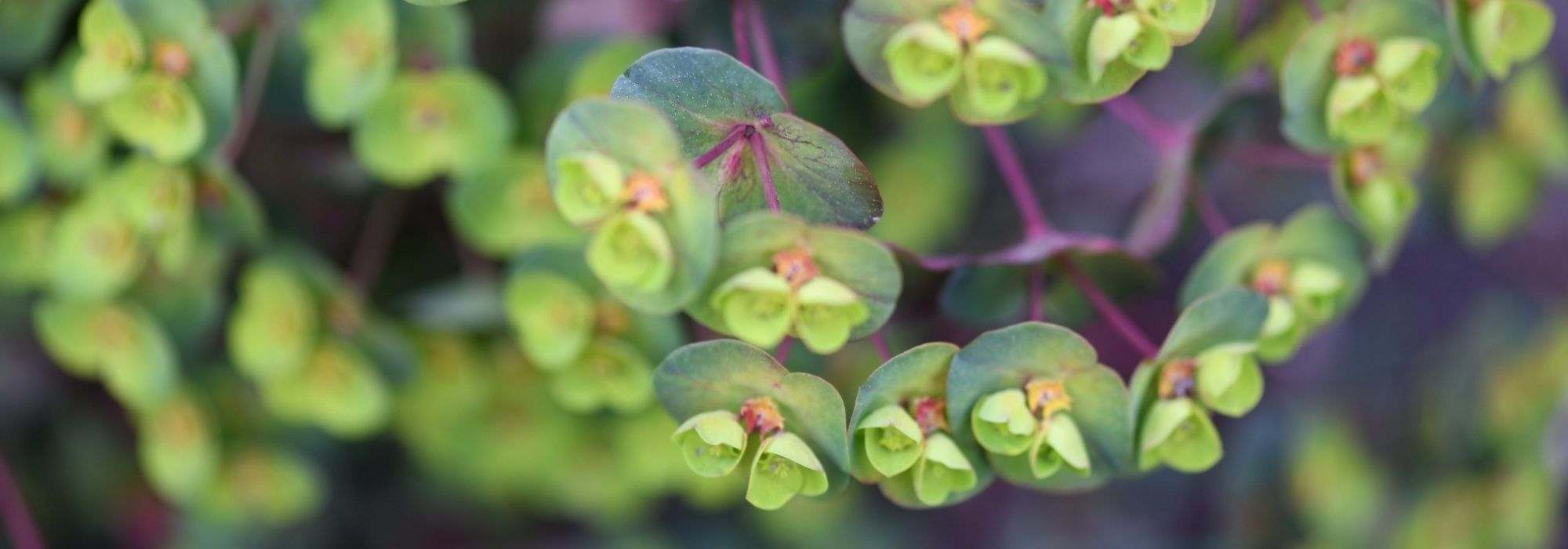
Growing a spurge in a pot
Our recommendations for successfully growing euphorbias in pots
Contents
Very graphic, euphorbia is ideal for providing structure and volume throughout the year. It fits into all décors, whether modern or more natural, but truly shines in the role of a spectacular plant. In addition to the colour and shape of their uniquely distinctive flowers, euphorbias offer the same wide diversity in their foliage, which varies from one species to another. The spectrum of colours available ranges from blue-grey to bronze-red, including various shades of green and yellow. This richness of forms and colour palettes rivals their ease of maintenance, which allows for their cultivation in pots and makes them the queens of our courtyards and terraces. Robust and low-maintenance, they will satisfy both experienced gardeners and beginners alike. Discover how to grow a euphorbia in a pot.

A spectacular architecture for this beautiful Euphorbia characias ‘Wulfenii’
Which varieties to choose?
The genus Euphorbia includes nearly 2000 very different species, most of which are easy to cultivate with no particular requirements. The most compact varieties are ideal candidates for pot cultivation.
Here is our selection:
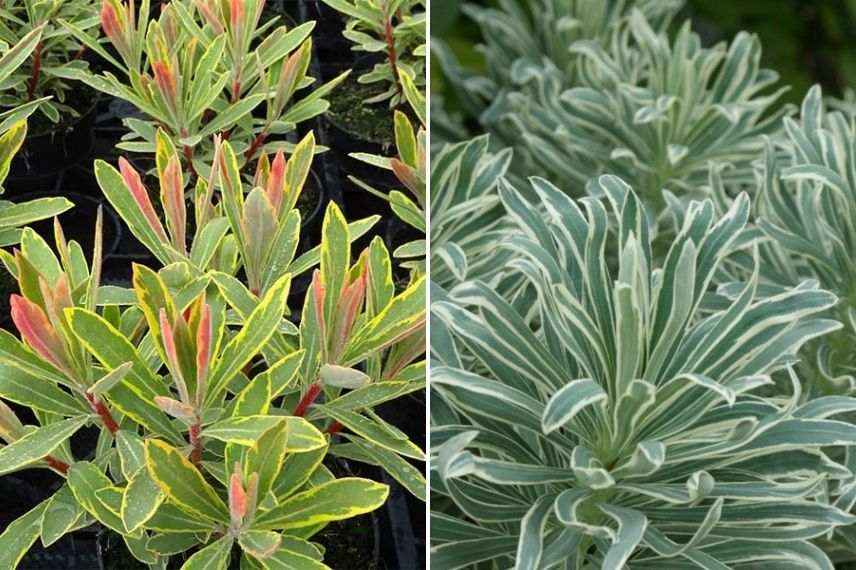
- Euphorbia martinii ‘Ascot Rainbow’ on the left, a true rainbow in a pot, it develops compact foliage and flowering elegantly mixing green, white, and pink (note that this variegated plant is sensitive to cold winds)
- Euphorbia characias ‘Glacier Blue’ on the right, for a very Mediterranean touch with its grey-blue foliage
Low-growing plants

- Euphorbia amygdaloides ‘Purpurea’ on the left, with evergreen, purple-green foliage, chartreuse green flowering, compact bushy form, hardy, and highly decorative in all seasons
- Euphorbia seguieriana ssp. niciciana – Siberian Spurge in the centre, with lemon-yellow flowering for a guaranteed light effect
- Euphorbia martinii ‘Baby Charm’ on the right, for the charm of its chartreuse yellow and red flowering, a compact plant with persistent blue-green foliage
For balcony planters
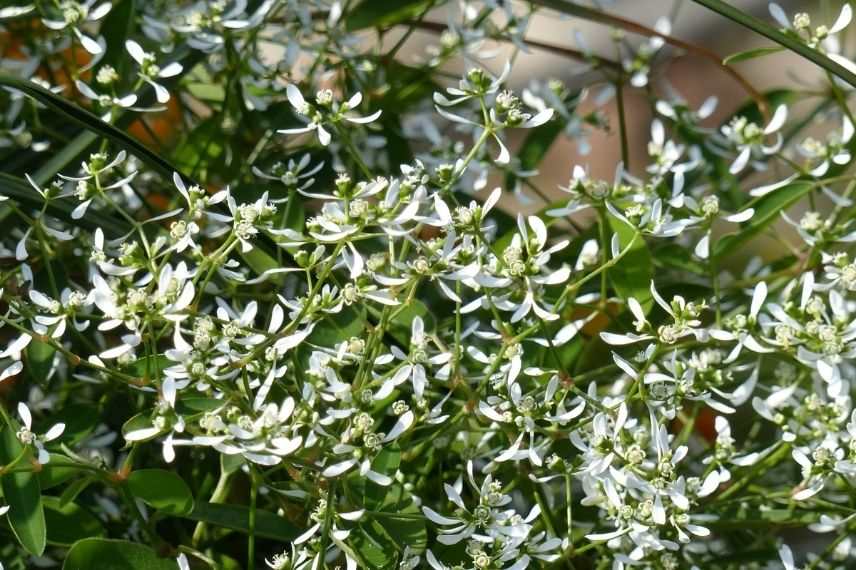
Euphorbia hypericifolia ‘Diamond Frost’
Euphorbia Hypericifolia ‘Diamond Frost’ or St. John’s Wort-leaved spurge displays its delicate small leaves in a beautiful green, from May until frost. This cloud of dozens of small white stars gives the plant a very airy appearance. Note that this plant is frost-sensitive.
Eric’s favourite: Euphorbia characias ‘Tasmanian Tiger’ is a sumptuous plant that features long variegated blue-green leaves edged in cream. Its flowering creates a luminous effect. Be careful not to water more than twice a week, as it needs occasional dryness. It will pair beautifully with Carex conica ‘Snowline’ and Lomandra longifolia ‘White Sands’.
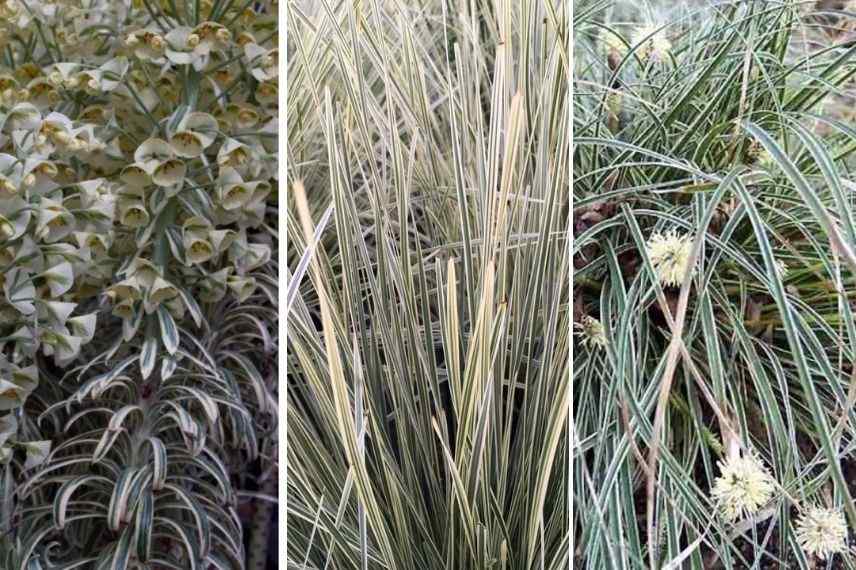
Euphorbia characias ‘Tasmanian Tiger’, Lomandra longifolia, Carex conica ‘Snowline’
What type of pot and substrate?
What pot for a potted euphorbia?
Install your euphorbias in a pot 30cm wide. Be cautious with Euphorbia characias and its cultivars, as well as Euphorbia lathyris (spurge), which have a taproot and can be challenging for pot cultivation. Euphorbia mellifera also prefers deep soils. For these euphorbias, you should choose a pot that is at least 40cm high. As all euphorbias require well-drained soil, you must ensure that your container has plenty of drainage holes. A non-glazed terracotta pot is preferable to any other type of container, such as zinc or plastic, as it will allow excess moisture to escape through its walls as well as through the drainage holes. In regions with a hot climate, a terracotta pot is doubly recommended to prevent overheating, which could irreversibly damage the roots. Lastly, be sure not to leave a saucer that would encourage moisture stagnation, which could be fatal to them.
Substrate
There are now potting soils specifically designed for pot and planter planting, but you can also make your own mix: garden soil, potting soil, and coarse sand in equal parts. Mix everything well to achieve a homogeneous mixture. It is better not to use universal potting soil, which dries out too quickly. It is essential to provide your euphorbia with a draining substrate by lightening it with river sand or pumice to avoid excess moisture.
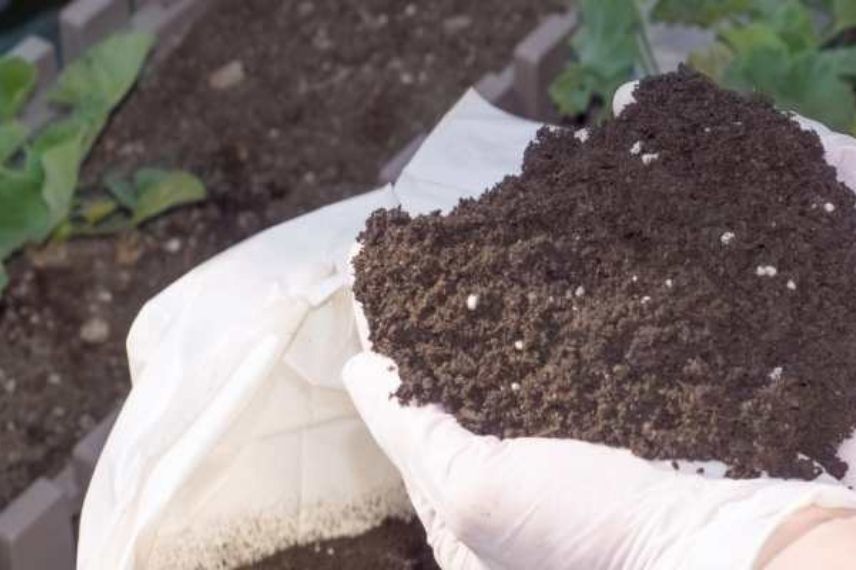 Euphorbia requires a draining and rich substrate
Euphorbia requires a draining and rich substrate
Discover other Euphorbia - Spurge
View all →Available in 1 sizes
Available in 4 sizes
Available in 1 sizes
Available in 1 sizes
Available in 1 sizes
Available in 1 sizes
Available in 1 sizes
Available in 1 sizes
Available in 1 sizes
Available in 1 sizes
When and how to plant euphorbia?
When to plant a euphorbia in a pot?
Although young plants can be planted all year round, ideally in spring, in April or May, depending on the region, when the risk of frost has passed is when we will carry out our pot euphorbia plantings. However, in the south of the Loire, we recommend planting in autumn to encourage root establishment before winter and thus prepare the young plant for potential summer drought.
How to plant a euphorbia in a pot?
-
Soak the root ball to saturate the substrate with water;
-
Install a drainage layer (gravel, broken pot pieces, or clay balls) at the bottom of the pot equivalent to 20% of the pot’s volume;
-
Fill with substrate and place your plant in the centre. Keep the root ball intact, as the euphorbia’s roots dislike being disturbed;
-
Fill in with the remaining mix to which you will add a bit of slow-release fertiliser before lightly compacting;
-
Water generously and then mulch, preferably with a mineral material (gravel, pebbles, slate…) to prevent moisture concentration. Mulch especially during the first winter following planting to allow for better recovery, keep the soil cool in summer, and protect against late frosts.
What exposure does the spurge need?
Euphorbia is a plant that loves heat and tolerates drought. Choose a bright exposure, even in direct sunlight for euphorbias.
Euphorbias withstand salty sea spray, you can plant them by the seaside while avoiding exposure to strong winds to prevent breaking the flower stems.

Euphorbias need significant sunlight to flower
How to care for potted euphorbia?
Watering
Euphorbias do not tolerate prolonged drought; watering should be light and periodic. Avoid watering the aerial parts of the plant as this can cause powdery mildew and other fungal issues on the foliage. In pots, euphorbias require regular watering due to the confinement of the roots, even after rainfall, as the foliage often prevents water from reaching the substrate. In summer, during very hot weather, water twice a day. In regions affected by the Mistral (specific wind in France), the watering of pots will follow the same regime as in cases of prolonged drought. Wait for the substrate to dry out in the top few centimetres before adding water from spring to autumn, when the plant is in full growth. During winter, the plant enters dormancy. Stop watering as the plant follows its normal vegetative cycle and goes dormant to protect itself from the harshness of winter.
Fertiliser applications
Although adapted to the most undemanding situations (Euphorbia means “well-fed” in Greek), the nutritional needs vary according to the species of Euphorbia, but in general, all plants will benefit from fertiliser. The addition of compost or a balanced organic fertiliser to a new plant will help promote healthy growth. Many species of Euphorbia will do well with a liquid fertiliser applied throughout the growing season.
Care and maintenance
Euphorbia requires no special care and is very easy to maintain. However, it needs to be supported before becoming self-sufficient. In summary, it is more likely to die from over-care, particularly from excessive watering, than from neglect.
For Euphorbia characias, cut back their stems after flowering to encourage new shoots. This will keep them vigorous and extend their lifespan.
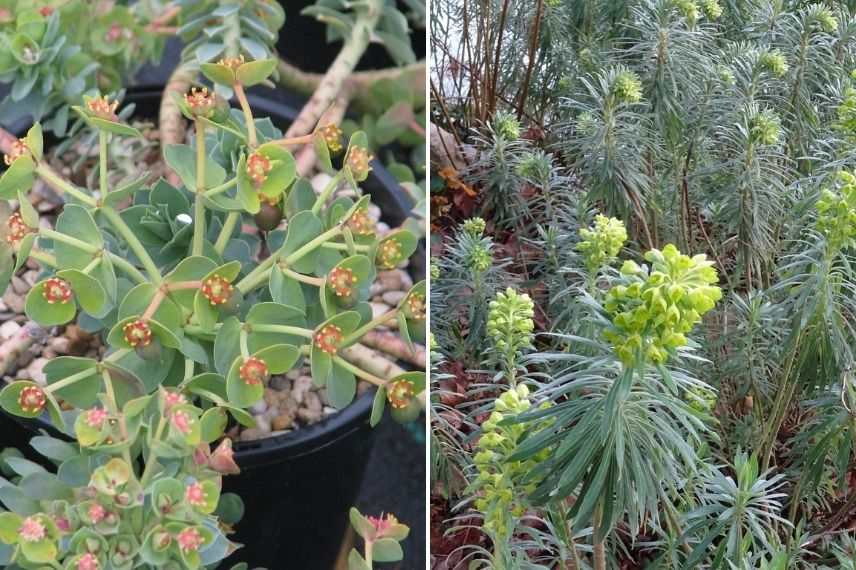
Myrsinites and characias euphorbias require very little maintenance.
⇒ Euphorbia produces a very caustic latex. It is highly advisable to wear gloves when pruning due to a milky sap that irritates the skin and eyes.
- Subscribe!
- Contents
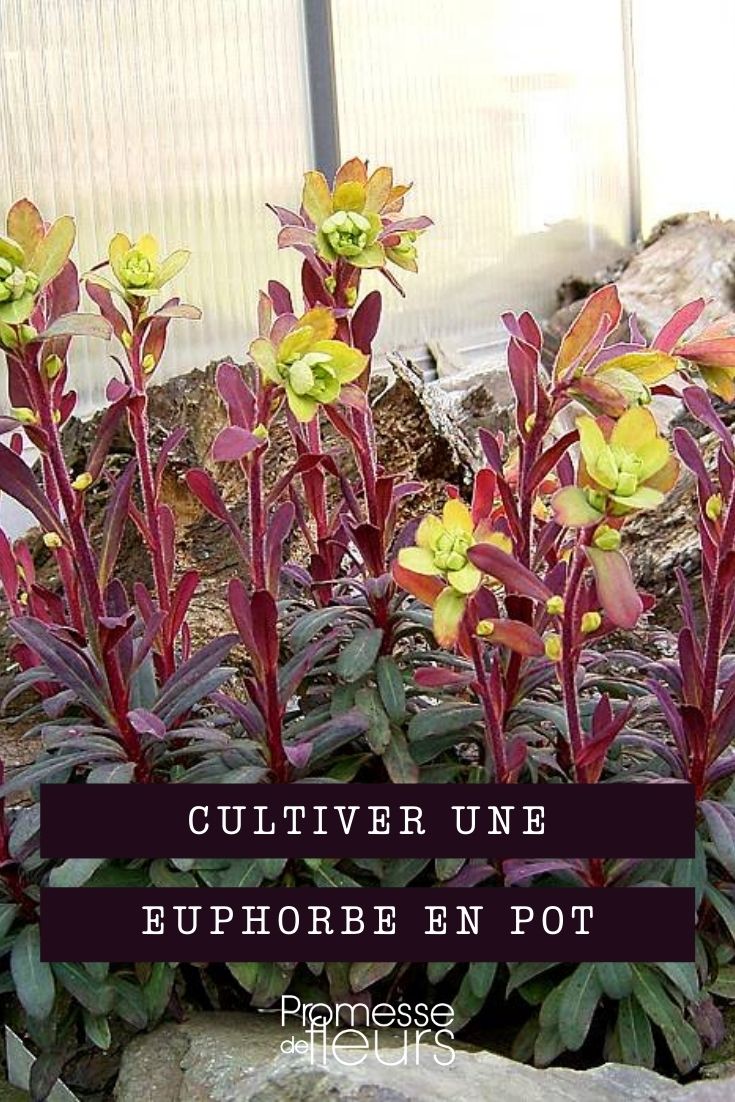
































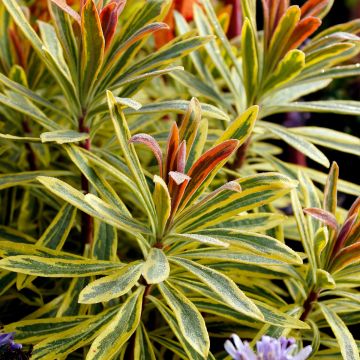

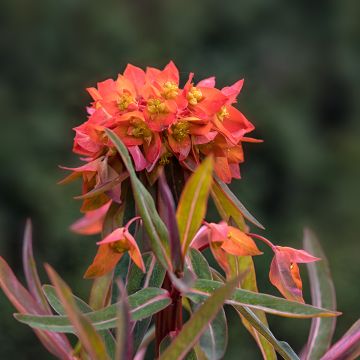
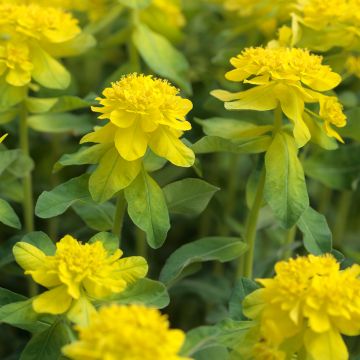
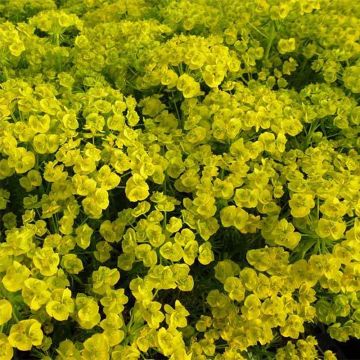
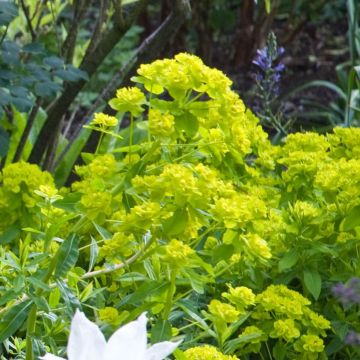
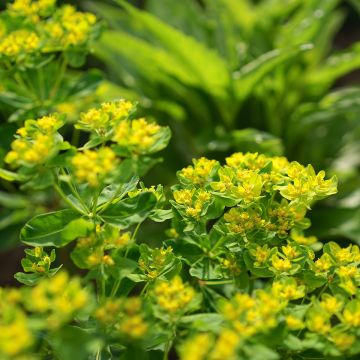
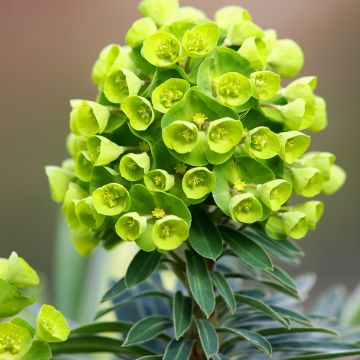
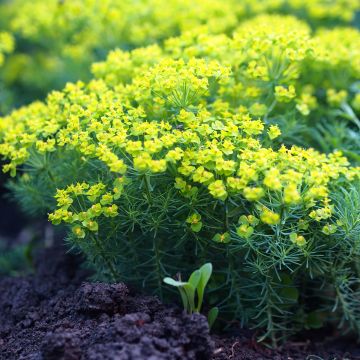
Comments